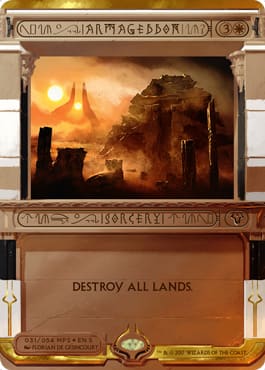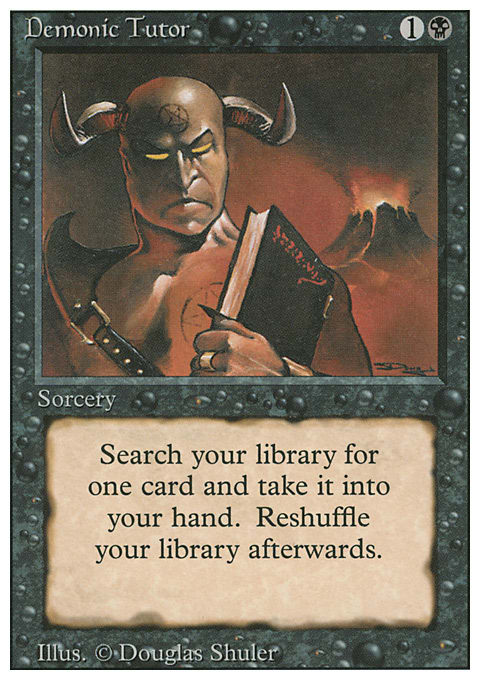I received a lot of interesting tweets this week, and they were enough to entirely inspire a full article. Not only that, I managed to relate two seemingly unrelated ideas into one cohesive message and use that as the thesis to the article. In fact, I am about to do it so seamlessly you won’t even notice. Well, I mean, you will now, obviously. But just imagine I hadn’t said anything. You totally would not have noticed if I hadn’t tipped you off, and that’s the magic of writing.
I wasn’t always a writer, though. I trained as a chemist and was employed as one for years. That time working in the lab taught me—okay, let’s be honest, it taught me basically nothing I use to this day. It was all very specific to the task at hand, and I’m not doing those tasks anymore. Still, I did learn some concepts that stuck with me. I can still remember a lot of things from my training that frustrate me when I am trying to podcast about this children’s card game we all love and I can’t remember the name of a card I want to relate to the discussion but I can remember something random like, “most boron compounds are electron-deficient and therefore good Lewis acids.” One useful thing I do remember from those days, though, is something called the Aufbau Principle, which I am linking to on Wikipedia even though the only two types of people in the world are people who know what the Aufbau Principle is already and people who don’t care. To put simply, electrons have a tendency to fill the lowest available energy level before filling the higher levels, and this leads to a more stable configuration. Like so many chemistry terms, Aufbau is German, and it roughly translates to “build up.” I think that’s why I was thinking about the concept this week.
I received some tweets from a follower who was a little stuck trying to get his decks to work out built from a 75% perspective.

Viewing 75% as a spectrum may be a result of the way I named the project. I wanted it to seem more qualitative than quantitative, and hindsight being 20/20, I should have called it the “3/4 project” or the “no, your deck isn’t an 83% deck, what does that even mean?” project because I have had to say both of those things on reddit. In truth, you don’t start with a deck that’s 50% and add cards until it’s 75%, and you certainly don’t start with a deck that’s 100% and take out cards until it’s 75%. That’s literally one of our only rules. Still, I get a lot of people wondering how “close” their decks are to 75%, and I think it’s important to remember that it’s not about the power level of the cards you add but the things you keep in mind when you build.
We don’t typically add Armageddon to a 75% deck, and it’s not because Armageddon is too powerful. Armageddon is usually less powerful than an Insurrection or kicked Tooth and Nail. We don’t add Armageddon to our decks because we don’t want to violate our principle that, “It’s better to punish our opponents for doing things than it is to prevent them from doing things,” or our other principle that, “If you play an Armageddon and don’t have a way to win and you’re just making the game take a lot longer, we’re going to give you a purple nurple”—which is a house rule. We don’t pursue that line of deck-building because that isn’t what we’re about. We start with an idea of how to build a Numot, the Devastator deck based on including as many snow permanents as we can and being thematic. We start from an idea (the 1s orbital, I guess), and we start adding until we have the backbone of a deck; then, we fill in the gaps. We build the strongest deck we can within our restrictions, and we’re left with a deck that should be fairly competitive but not as linear as the “obvious” Numot, the Devastator build. And really, linearity is the enemy when we build 75%, not power. We eschew tutors if we’re tempted to always grab the same card, we prefer dynamic cards to inflexible ones, and we avoid boring win conditions like Laboratory Maniac. We’re making the game fun for everyone, not by making our deck bad, but by making or deck have to work a little harder than the decks that aim to combo off on turn three the same way every single game.
What we don’t do is take a Spikey, “optimized” Numot, the Devastator list, take out the Armageddon and Wildfire, replace them with different cards, and call it a day. We have to abandon the way of thinking that, “75% is less than 100%, so we just get down to that level.” We should start looking at it as a situation in which we are trying to fill up to the 3d orbital instead of the 4f. You can argue that a lower energy level is less competitive, but it’s going to be just as stable. You don’t get there by taking out electrons, readers. Trust me. We get to a stable configuration by building up.
A deck is either 75% or it isn’t. There’s no such thing as a 74% or 76% deck—we either build with the 75% deck-building ethos in mind and successfully make our deck to those specifications and end up with a deck that functions the way we want it to . . . or we don’t. If it doesn’t function that way, we keep tweaking it until it works. That isn’t to say we can’t remove cards that don’t work out, merely that we don’t start with an ideal deck in mind and take out cards until the deck we end up with is worse. You won’t end up with a deck that works very well that way—you’ll be a gross, Spikey Numot deck that never wins because on the turn you should be casting Wildfire because that’s what that build should be doing, you’re durdling because you don’t have Wildfire in the deck anymore.
Knowing how to take out and replace cards is important, and it’s not the easiest thing to do. It’s easy to know how to do it when the deck isn’t working, but how about if the deck is the way we like it? I was contacted by a reader who was interested in how I would update my 75% Nath deck to account for new cards that have been printed since that article was published. The further a deck gets from when we brew it, the more dated it can look and the more glaring some omissions become. How do we reconcile our new Aufbau approach with needing to keep a deck fresh? At least there is no shortage of stuff to add. We’ve seen some pretty sicko new goodies in the meantime—which ones should be in the deck? How do we decide what to take out? Here is how I would play the Nath deck today.
Getting even Nathtier ? Commander | Jason Alt
- Commander (0)
- Creatures (31)
- 1 Bramblewood Paragon
- 1 Champion of Lambholt
- 1 Copperhorn Scout
- 1 Craterhoof Behemoth
- 1 Deathrite Shaman
- 1 Elvish Archdruid
- 1 Elvish Champion
- 1 Elvish Harbinger
- 1 Fyndhorn Elves
- 1 Heritage Druid
- 1 Imperious Perfect
- 1 Jagged-Scar Archers
- 1 Joraga Warcaller
- 1 Llanowar Elves
- 1 Masked Admirers
- 1 Oracle of Mul Daya
- 1 Priest of Titania
- 1 Reclamation Sage
- 1 Sadistic Hypnotist
- 1 Shaman of the Pack
- 1 Skyshroud Poacher
- 1 Timberwatch Elf
- 1 Wellwisher
- 1 Wren's Run Packmaster
- 1 Duplicant
- 1 Elf Replica
- 1 Dwynen, Gilt-Leaf Daen
- 1 Ezuri, Renegade Leader
- 1 Jarad, Golgari Lich Lord
- 1 Meren of Clan Nel Toth
- 1 Rhys the Exiled
- Planeswalkers (2)
- 1 Nissa Revane
- 1 Vraska the Unseen
- Spells (33)
- 1 Abrupt Decay
- 1 Beast Within
- 1 Hero's Downfall
- 1 Krosan Grip
- 1 Putrefy
- 1 Boundless Realms
- 1 Dark Deal
- 1 Death Cloud
- 1 Decree of Pain
- 1 Exsanguinate
- 1 Farseek
- 1 Genesis Wave
- 1 Ill-Gotten Gains
- 1 Kodama's Reach
- 1 Maelstrom Pulse
- 1 Praetor's Counsel
- 1 Doubling Season
- 1 Mind Slash
- 1 Creeping Dread
- 1 Cryptolith Rite
- 1 Parallel Lives
- 1 Perilous Forays
- 1 Pernicious Deed
- 1 Phyrexian Arena
- 1 Vampiric Rites
- 1 Ashnod's Altar
- 1 Coat of Arms
- 1 Geth's Grimoire
- 1 Phyrexian Altar
- 1 Skullclamp
- 1 Slate of Ancestry
- 1 Stoneforge Masterwork
- 1 Thousand-Year Elixir
- Lands (33)
- 12 Forest
- 9 Swamp
- 1 Blighted Woodland
- 1 Bojuka Bog
- 1 Cavern of Souls
- 1 Golgari Rot Farm
- 1 Grim Backwoods
- 1 Mortuary Mire
- 1 Oran-Rief, the Vastwood
- 1 Overgrown Tomb
- 1 Tainted Wood
- 1 Temple of Malady
- 1 Tranquil Thicket
- 1 Wirewood Lodge
It was obvious which card we needed to cut first—my version of the deck previously included Rofellos, Llanowar Emissary because he was banned as a commander but not as a deck inclusion, a rule they’ve since rescinded. However, it was equally easy to know what to put in its place—and the list of cards to include soon grew quickly. Shaman of the Pack has become a new win condition for the deck since I added it to my own version, and cards like Dark Deal and Creeping Dread synergize perfectly with our commander. Even Stoneforge Masterwork seems tailor-made for a deck with Jarad, Golgari Lich Lord in it. But what to take out?
Rather than defend the particular choices I made, I think we should just give a few guidelines for how not to take cards out so we avoid the whole approach of, “I’m hacking an optimized deck down until I’m left with a 75% deck,” which we’ve established isn’t how we want to proceed.
Am I Taking This Out Just Because I Think It’s Too Strong?
We’re not going to build a 75% deck by taking good cards out of a stronger deck. If we need to cut a card for space, cut something weak, not something strong. We’re trying to build the best possible deck out of a smaller card pool, not build a less-than-optimal deck out of a larger card pool. Cutting for pure power is a surefire way to end with a deck that doesn’t work.
Am I Cutting a Tutor from a Deck That Won’t Abuse It?
We, in general, don’t like tutors like Demonic Tutor in a 75% deck, but that isn’t to say all tutors are inherently bad. Just watch what you’re fetching, and if it’s the same card all the time, maybe consider a cut. However, cutting Elvish Harbinger from this deck is a mistake because it’s a toolbox card in this build rather than a mere second copy of Death Cloud or whichever card you always wish you had.
Does Cutting This Fundamentally Change the Way the Deck Wins?
One reason we build up rather than tear down is sometimes omissions are glaring. Cutting Laboratory Maniac from a Mirror-Mad Phantasm combo deck because we don’t like to constantly win with Laboratory Maniac won’t work because the deck is not set up to do much else. If we start from the bottom and build toward alternate win conditions, cutting Laboratory Maniac because the deck wins another way makes sense.
As long as we cut cards for the right reasons, or at least the not wrong reasons, there’s no reason we can’t constantly keep our decks refreshed. Leaving the deck in a stale configuration because it’s in a 75% sweet spot and you don’t want to upset the balance does you a disservice because fun new cards are being printed all the time, and to deprive yourself of them out of fear isn’t very 75%. As long as you’re still aiming at the target the same way, upgrading cards or allowing ourselves more flexibility will never invalidate our deck somehow. If it was built the right way to begin with, you have nothing to fear. Besides, a stale deck is just as boring as a linear one, so remember to add new stuff as it’s printed.
Any questions? Comments? Want to swap physical-chemistry horror stories? Leave it in the comments section. As always, thanks for reading, and keep sending me your questions and comments via Twitter or e-mail. Thanks, everyone! Until next time.



























